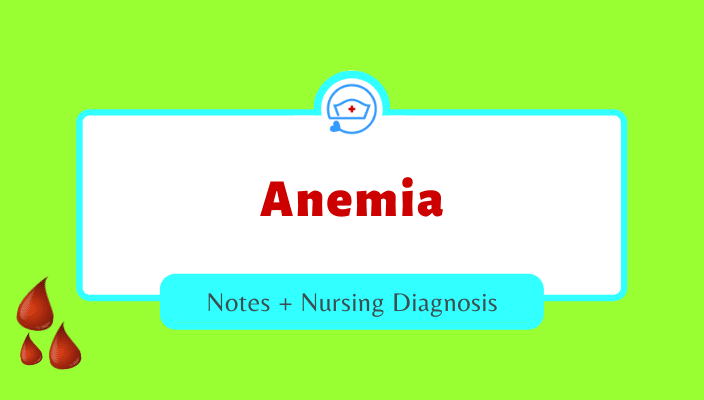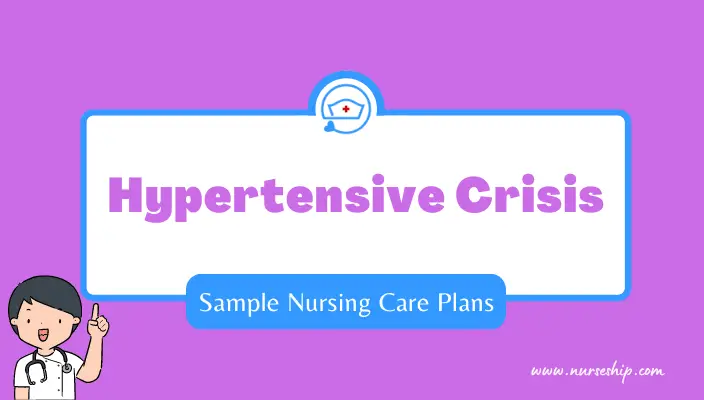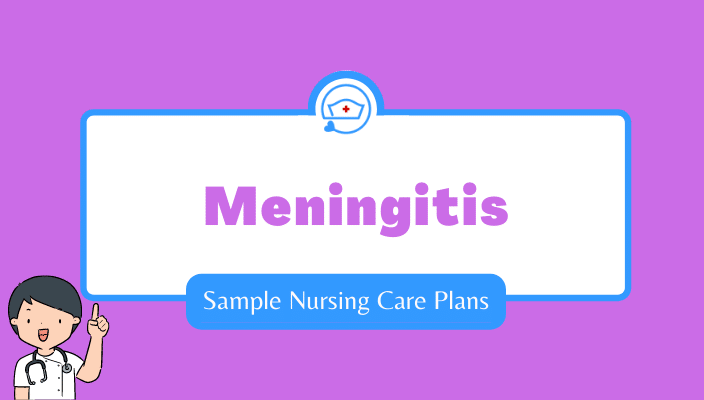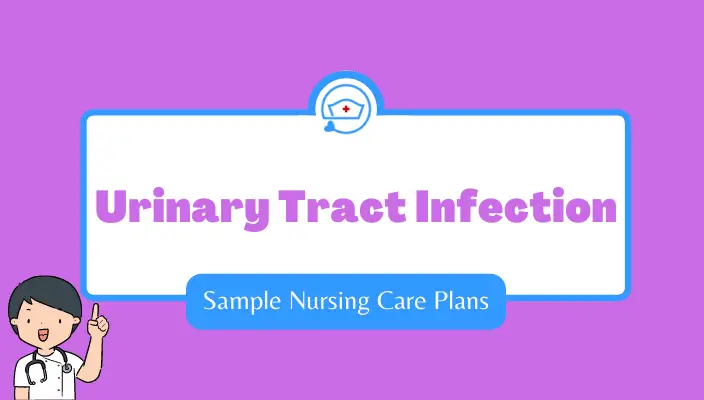Here, we’ll briefly review Anemia and a list of actual and risk Anemia Nursing Diagnoses.
Check out this sample nursing care plan for anemia.
What is Anemia?
Anemia is a condition in which the hemoglobin concentration is lower than normal. It reflects the presence of fewer than the normal amount of erythrocytes within the circulation.
As a result, the amount of oxygen delivered to body tissues is also diminished. It is by far the most common hematological condition.
Anemia is classified as the following:
- Hypoproliferative anemia( Resulting from Defective RBC production)
- Bleeding ( Resulting from blood loss)
- Hemolytic ( Resulting from RBC destruction
Causes
1. Anemia caused by blood loss:
- Gastrointestinal conditions such as ulcers, hemorrhoids, gastritis, and cancer.
- Use of NSAIDs such as ibuprofen or aspirin.
- Heavy menstrual bleeding
- Post trauma or post- surgery bleeding
2. Anemia caused by defective or faulty RBC production:
- Bone marrow and stem cell problems
- Iron deficiency anemia
- Sickle cell anemia
- Vitamin deficiency anemia, such as folate or Vitamin B12
3. Anemia caused by RBC destruction:
- Autoimmune disease like systemic lupus erythematous
- Enlarged spleen
- Toxins from advanced liver or kidney disease
Clinical Features
- Fatigue, weakness
- Dizziness, lightheadedness
- Fast or unusual heart beat
- Shortness of breath
- Skin that’s pale or yellowish
- Cold hands and feet
- Sore tongue
Diagnostic Testing
- Complete blood cell count test measuring hemoglobin, hematocrit.
- Reticulocyte counts to check for immature red blood cells
- Iron studies ( serum iron level, total iron binding capacity , percent saturation, and ferritin)
- Bone marrow aspiration
- Other tests are performed to determine the presence of underlying chronic illness
Medical Management
- Administration of medications and iron supplementations
- In case of blood loss, surgery is performed to hold back bleeding
- Blood transfusion
- Bone marrow transplantation
Anemia Nursing Diagnoses
Actual Nursing Diagnosis for Anemia
Some of the actual anemia nursing diagnoses include:
- Decreased Activity Tolerance related to imbalance between oxygen supply and demand as evidenced by verbal reports of fatigue and weakness, abnormal heart rate or BP response, decreased exercise or
activity level, and shortness of breath. - Imbalanced Nutrition: less than body requirements related to failure to ingest or inability to digest food or absorb nutrients necessary for the formation of normal red blood cells, as evidenced by weight loss or weight below normal for age, height, and body build; decreased triceps skinfold measurement, changes in gums or oral mucous membranes, decreased tolerance for activity, weakness, and loss of muscle tone.
- Fatigue related to anemia, malnutrition, as evidenced by feeling tired, inability to maintain usual routines, or level of physical activity.
- Deficient Knowledge related to inadequate understanding or misinterpretation of dietary and physiological needs, as evidenced by inadequate dietary intake, request for information, and development of preventable complications.
Risk Nursing Diagnosis for Anemia
Some of the risk anemia nursing diagnoses include the following.
- Risk for deficient Fluid Volume: risk factors may include active or chronic blood loss.
- Risk for impaired Gas Exchange: risk factors may include decreased Oxygen carrying capacity of the blood, predisposition to bacterial pneumonia or pulmonary infarcts
- Risk for ineffective Tissue Perfusion: risk factors may include myocardial damage
- Risk for impaired Oral Mucous Membrane: risk factors may include dehydration, malnutrition, vitamin deficiency.
- Risk for bleeding: risk factors include low hemocratic level
Click here to see a scenario-based sample nursing care plan for anemia.
Reference
Ackley, B.J., Ladwig, G.B., Flynn-Makic, M.B., Martinez-Kratz, M.R., & Zanotti, M. (2020). Nursing Diagnosis Handbook: An Evidence-based Guide to Planning Care [eBook edition]. Elsevier.
Herdman, T., Kamitsuru, S. & Lopes, C. (2021). NURSING DIAGNOSES: Definitions and Classifications 2021-2023 (12th ed.). Thieme.




